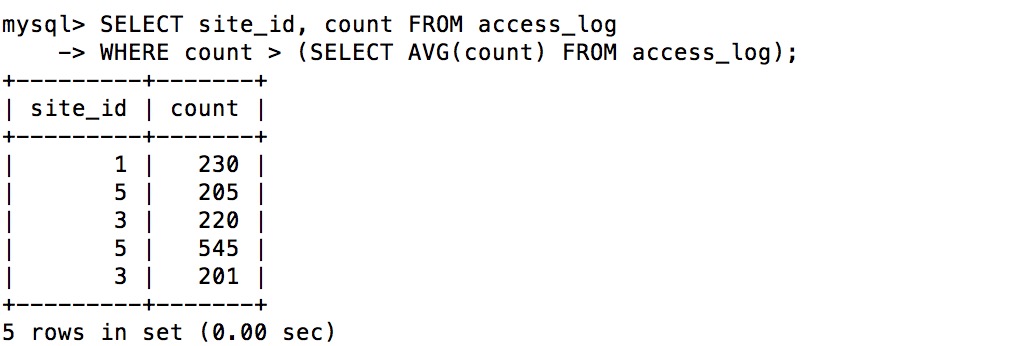SQL AVG () function
The AVG () function
AVG () function returns the average value of the column.
SQL AVG () syntax
SELECT AVG(column_name) FROM table_name
The demo database
In this tutorial, we will use w3big sample database.
The following data is selected from the "access_log" table:
+-----+---------+-------+------------+ | aid | site_id | count | date | +-----+---------+-------+------------+ | 1 | 1 | 45 | 2016-05-10 | | 2 | 3 | 100 | 2016-05-13 | | 3 | 1 | 230 | 2016-05-14 | | 4 | 2 | 10 | 2016-05-14 | | 5 | 5 | 205 | 2016-05-14 | | 6 | 4 | 13 | 2016-05-15 | | 7 | 3 | 220 | 2016-05-15 | | 8 | 5 | 545 | 2016-05-16 | | 9 | 3 | 201 | 2016-05-17 | +-----+---------+-------+------------+
SQL AVG () examples
The following SQL statement to obtain an average value from column "access_log" table "count":
Examples
SELECT AVG(count) AS CountAverage FROM access_log;
Execute the above SQL output results are as follows:

The following SQL statement selects views above average views of "site_id" and "count":
Examples
SELECT site_id, count FROM access_log
WHERE count > (SELECT AVG(count) FROM access_log);
WHERE count > (SELECT AVG(count) FROM access_log);
Execute the above SQL output results are as follows:
